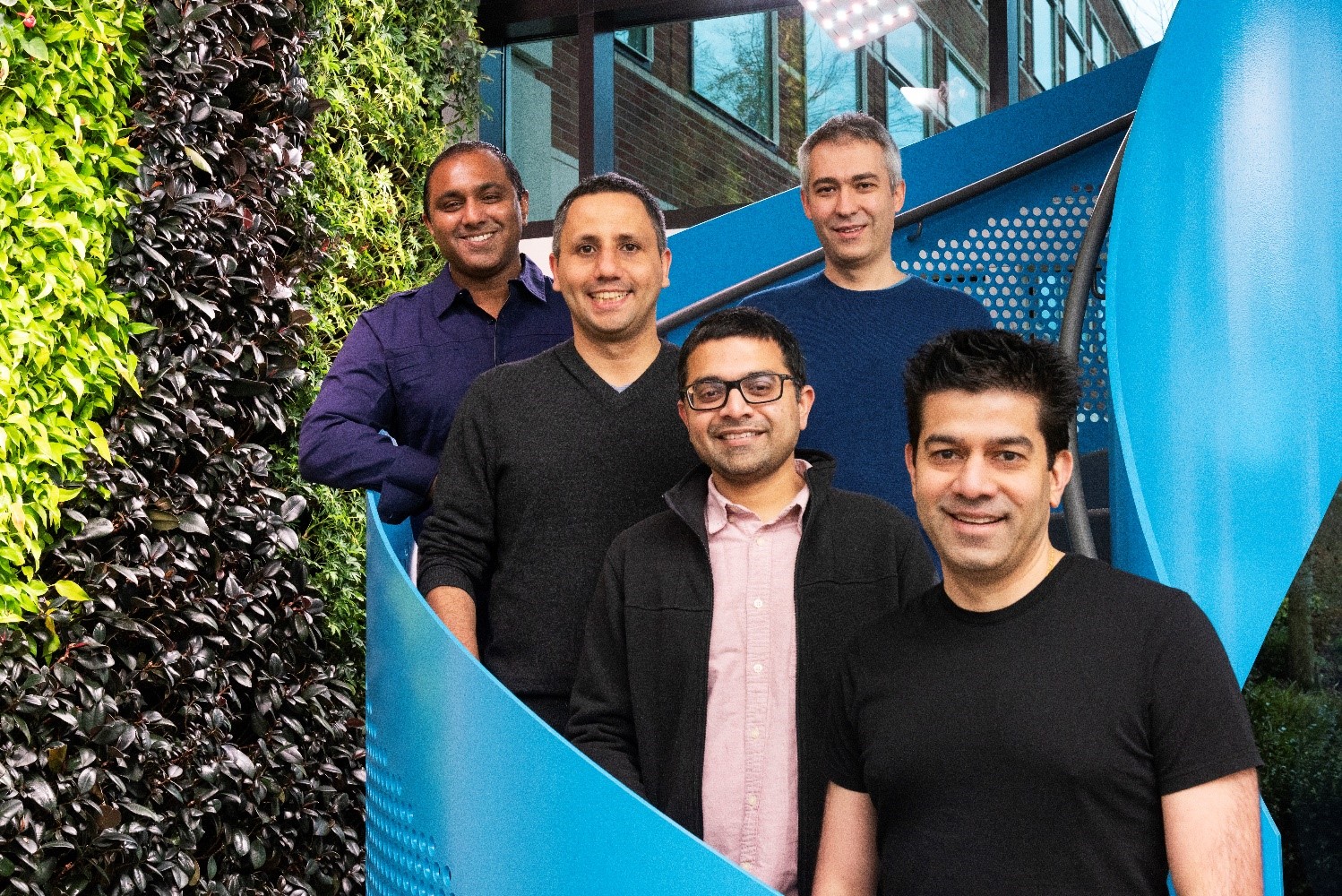Munchery’s vendors claim the food delivery startup took advantage of them in its final hours, knowingly allowing them to continue making deliveries it couldn’t pay for.
Earlier this week, Munchery surprised customers with an email announcing it would cease operations, effective immediately. It did not, however, notify any of its vendors of the news, according to the owners of several small San Francisco-based businesses, who told TechCrunch they are owed thousands in overdue Munchery payments.
Charles Farriér, the owner of Crumble & Whisk Patisserie, is waiting on a $1,700 payment from Munchery. Lenore Estrada of Three Babes Bakeshop said she’s owed more than $20,000. Melissa Cohen of Salty Sweet Cookies, Jennifer Roy of Dandelion Chocolate and Jennifer Nguyen of Native Baking Co. are expecting a total of $16,417.50.
Munchery was founded in 2010 by former chief executive officer Tri Tran and Conrad Chu, who have both since left the company. It had raised a total of $125 million in venture capital funding, reaching a valuation of $300 million at its peak. Supported by notable Silicon Valley investors, including Greycroft, Menlo Ventures and Sherpa Capital, the high-flying startup failed to deploy capital efficiently, then crumbled.
Now, three days after its sudden announcement, several vendors are waiting anxiously for their final invoice checks, and say they weren’t notified of Munchery’s end, nor has the business responded to persistent requests for explanations.
Munchery has not responded to multiple requests for comment from TechCrunch . As of Thursday morning, Munchery had not officially filed for bankruptcy in the Federal Court or in the Superior Court of San Francisco.

Munchery chief executive officer James Beriker joined the startup in 2016.
Gone without a trace
Days before Christmas, Farriér was told to slow down production of his artisan cheesecakes, which he had been servicing to Munchery for three years.
Munchery provided prepared meals to residents in San Francisco, Los Angeles, Seattle and New York. In addition to preparing ingredients in-house in its South San Francisco headquarters, the startup also partnered with local businesses, like Crumble & Whisk, whose baked goods were included with its meals.
Unlike the other business owners TechCrunch spoke with, Farriér said he had caught on to Munchery’s financial struggles after multiple late payments, and was on the verge of ending his relationship with the business entirely. Little did he know they were just weeks away from an implosion, that, according to sources, even some Munchery employees weren’t aware of until 24 hours before the end of business announcement was sent to customers.

Charles Farriér, the owner of San Francisco-based bakery Crumble & Whisk Patisserie.
“Today, with a heavy heart, we’re reaching out to announce that Munchery is closing its doors,” the business wrote in an email signed “Team Munchery.” “More than anything, we want to say thank you. Thank you for all of the love and support you have shown us over the years, for sharing us with your friends and family, and for including us in your special life moments.”
Beriker, who joined the startup as CEO in November 2016 after a four-year stint as the chief executive of recruitment firm Simply Hired, was missing from the signature of the email. Beriker has gone dark, opting not to respond to media requests, as well as emails and phone calls from vendors looking for payment.
“Munchery ran into a wall rather than planning to shut down in an orderly fashion,” Munchery vendor Lenore Estrada told TechCrunch.
When Farriér heard the news on Monday, he went to Munchery’s headquarters seeking his final payment. To his surprise, no one, except another aggravated vendor, was there. The $1,700 Farriér is owed may be equivalent to the cost of a dinner with colleagues for some Silicon Valley entrepreneurs, but for him, it’s meant being forced to take out a loan to pay his employees.
“They just expect us to sit back and take it but we need that money to keep our businesses afloat,” Farriér told TechCrunch. “It may be pennies to them but it’s money to us, we cannot stay afloat without being paid. It hurt my business; I had to take out a loan; I had to tell my staff I couldn’t pay them this week.”
Farriér has worked with a number of tech-enabled food delivery platforms, including Good Eggs and Sprig, which similarly went out of business in May 2017. Contrary to how Munchery has handled its sudden ending, however, Sprig, he said, ensured all vendors were paid the same day the startup notified them that it would cease operations.
“The sad part about this whole situation is [Munchery] didn’t even have the courtesy or the respect to let the vendors know,” Farriér added. “It’s a real slap in the face.”
Bakers await payments
Estrada of Three Babes Bakeshop said she’s heard nothing from Munchery about its shutdown or the $20,000 owed her. Cohen, Roy and Nguyen similarly told TechCrunch they’ve attempted to reach out to Munchery, to no avail.

Dandelion Chocolate owner Jennifer Roy says Munchery owes her $6,000.
“The thing that’s really baffling to me is why they didn’t call it earlier,” Estrada told TechCrunch. “When I was there [Tuesday], there was a truck leaving with food that had been donated. Munchery ran into a wall rather than planning to shut down in an orderly fashion. That’s just crazy, as I’m sure they knew how much runway they had.”
Estrada and Nguyen said Munchery had standing orders with both Three Babes Bakery and Native Baking Co. Three Babes had planned to make their delivery Tuesday, one day after Munchery announced they were going out of business. Munchery never canceled the standing order. Native Baking Co. completed their standing order delivery Monday morning, the same day Munchery said it would cease operations.
“I’ve been hounding them to pay me for old invoices for the whole month of January,” Nguyen told TechCrunch. “During the holidays, we are so busy, so as a small business owner I wasn’t totally on top of keeping up with [payments]. I just thought I will get to January, then I will deal with it.”
Nguyen ultimately learned of Munchery’s shut down Tuesday morning from an article in the San Francisco Chronicle.
Munchery, as mentioned, had raised roughly $125 million in VC funding across rounds that closed in 2013, 2014 and 2015. Munchery didn’t raise any capital under Beriker, who was appointed amid reports the business had been struggling to improve its margins, aside from a $5 million financing in 2017.
“For a company that had raised so much money, it’s shocking to me that the CEO and the board weren’t more on top of calling it with enough time to pay their vendors,” Estrada added. “I personally will go without pay to pay my employees because of this situation. Will the Munchery CEO be doing the same? Most likely not.”
According to a 2016 report from Bloomberg, Munchery was making way too much food — much of which was thrown out — and was spending “hundreds of thousands of dollars” distributing discount flyers. For what it’s worth, Munchery told TechCrunch at the time of those reports that its “customer base and revenue [were] growing” and that it was profitable in San Francisco and “contribution margin positive” in its three other markets.
This was, however, before Munchery laid off 257 employees, or 30 percent of its workforce, and shut down its Seattle, Los Angeles and New York operations. In May 2018, at the time of the layoffs, the company said it planned to double down on the San Francisco market, “achieve profitability” and “build a long-term, sustainable business.”
“This feels like these guys locked the doors and ran off to another country,” Munchery vendor Jennifer Nguyen told TechCrunch.
Why Munchery and CEO James Beriker decided not to communicate its demise with vendors is unclear, as is what ultimately forced it to shutter so suddenly. What is clear is that Munchery ran into a brick wall and fast, left without enough cash to settle even its smallest debts.
“This feels like these guys locked the doors and ran off to another country,” Nguyen said. “I only have a couple of employees and I want to pay them. Nine-grand isn’t much to a giant company, but it makes a huge difference at our company. It feels as if we’ve been taken advantage of by the big guy and it sucks.”
Of the five businesses that spoke to TechCrunch, Munchery owes nearly $40,000 in overdue bills. What’s next? Munchery will inevitably officially file for bankruptcy and the small business owners — collateral damage of a startup that failed to overcome the brutal economics of the central kitchen model — will go without payment.
“I basically mean nothing to [Munchery],” Farriér said. “I’m just there to make sure [them] look good on paper. I’m just a number to [them].”

 The company has used this machine learning tech in the past to help it select winners for its writing awards among hundreds of thousands of submissions, and it has leveraged its insights to help the company figure out which stories make the most sense to turn into TV shows and movies.
The company has used this machine learning tech in the past to help it select winners for its writing awards among hundreds of thousands of submissions, and it has leveraged its insights to help the company figure out which stories make the most sense to turn into TV shows and movies.






 “70% of our market managers were originally drivers, and they become w2 workers” Oberwager says proudly. Jyve even makes it easy for brands and retailers to hire its top giggers for full-time jobs. Why would the startup allow that? “I want to put it on
“70% of our market managers were originally drivers, and they become w2 workers” Oberwager says proudly. Jyve even makes it easy for brands and retailers to hire its top giggers for full-time jobs. Why would the startup allow that? “I want to put it on


